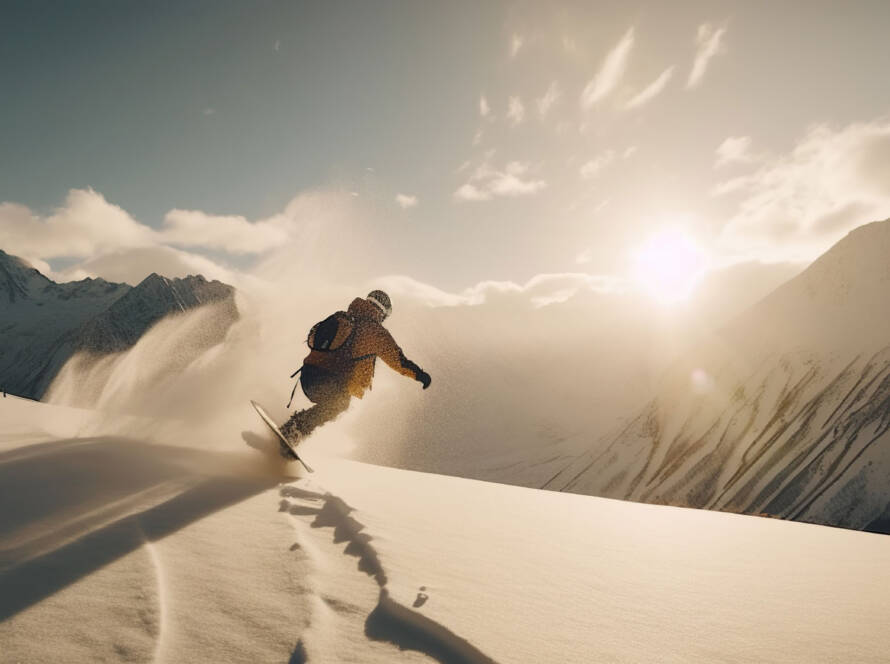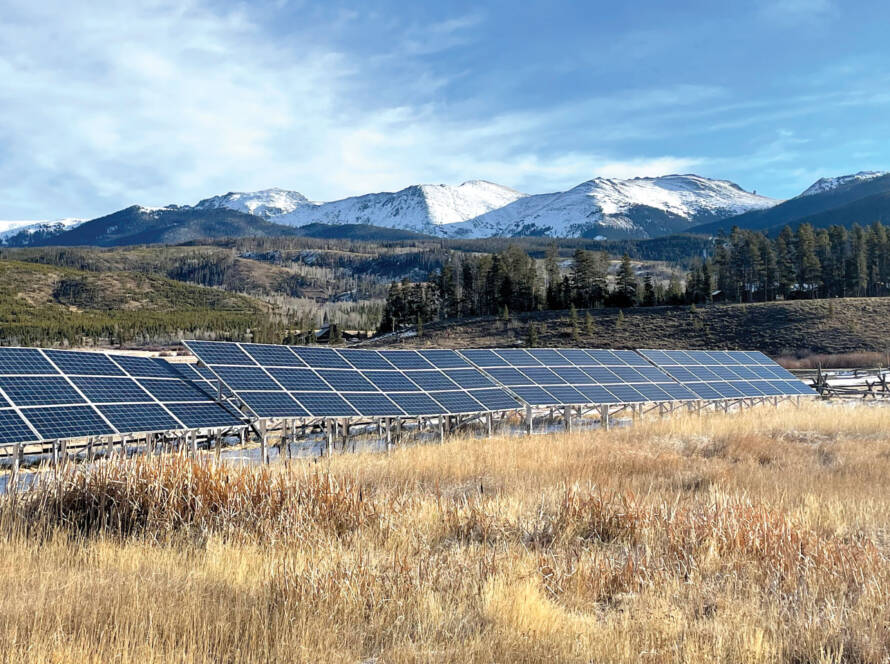Ski resorts rely strongly on both environmental stability and pristine mountain conditions and – as such – have a huge stake in issues surrounding climate change and environmental stewardship.
That being said, ski and mountain resorts across North America must be careful to take proper care of the environment around them and reduce their impact as much as possible. As a result, more resorts are becoming increasingly eco-conscious as they look to offset the stresses that their facilities put on surrounding ecosystems.
“Whether you believe in climate change or not, the weather is the weather,” said Jim Van Dyke, vice president of environmental sustainability at Jiminy Peak Mountain Resort in Hancock, Mass. The largest ski and snowboard resort in southern New England, Jiminy Peak was the first mountain resort in North America to generate its own energy using alternative wind power.
“The weather is different from year to year, and it is certainly different from what we remember as kids,” he said. “Whatever the cause, if we want to stay in business, we need to adapt. And adaptation comes in many forms. If it is learning new technology and energy conservation that you can apply in marginal conditions versus waiting for the temperature to get to 10 degrees to make snow, more power to you.”
When it comes to identifying some of the worst causes of environmental stress at ski resorts, Van Dyke says this can pretty much be summed up in one word – weather.
“From a factual standpoint, we have seen an increase in our average snowmaking ambient air temperatures over the years. I’ve been at Jiminy for 43 years and we have been measuring this for the last 20-plus years. The average winter temperature for us was about 24 degrees. Now it’s more like 26 degrees.”
However, being able to capitalize on these short weather windows for snowmaking is stressful, he says. “You have to have the resources to do that. From a water quantity in storage standpoint and then your snowmaking infrastructure, you need to be able to convert as much water into snow as quickly as possible at warmer temperatures.”
Jennifer Caldwell is part of the environmental sustainability team at Stevens Pass in Skykomish, Wash., approximately 70 miles east of Seattle. She cites fossil fuel consumption and carbon emissions from the vehicles that drive to the resort as some of the worst offenders of environmental stress, as well as machinery on the mountain.
“A lot of the vehicles and machinery on the mountain – from snowcats used for grooming to regular pick-ups – are not the most efficient,” she said. “I also think that wastewater and sewage treatment is a big stress on the land brought on by resorts.”
Additionally, she says the power draw is pretty significant. “If all ski areas were solar and wind powered, they would all be one step closer to having less of an impact on the planet,” said Caldwell.
Strategies to lessen environmental impact
In an effort to lessen their impact on the environment, Caldwell says there are a number of strategies that ski resorts can employ, such as less reliance on on-grid electricity. As an example, Stevens Pass buys all of its electricity from carbon neutral sources, and offsets all of its electricity and propane use with carbon credits that go to promote wind and other green energy initiatives.
Definitely one to practice what it preaches, Stevens Pass has been honored numerous times over the past 20 years by the National Ski Areas Association (NSAA) for its overall environmental excellence and energy conservation.
At Jiminy Peak, Van Dyke says they installed a wind turbine in 2007, which – at the time – made it the only North American ski resort that had a turbine powering it.
“There are quite a few now, which is good. We installed a 1.5-megawatt turbine because of high electric rates,” he said. “We were seeing double-digit increases in power in the early 2000s. We couldn’t afford this, nor could we continue to pass on these operating costs to the customer.”
A $4-million investment, Van Dyke smiles and says the stars were aligned when Jiminy made this investment.
“At that time, our masterplan had been completed and our debt was very low. The payback on the wind turbine was only seven years and it is now paid back. We also buy power from a 2.3-megawatt solar farm right up the street, and we have a congeneration unit. Its main purpose is to provide hot water for our country inn, but at the same time it generates power that is used by the inn.”
Conserve and recycle
Other strategies that resorts utilize to lessen their environmental impact are not exclusive to the ski industry. “We all know how to recycle,” said Van Dyke. “The same with conservation. This is as easy as reminder notices for people to turn off the light when they leave a room to automatic occupancy sensors that will do it.”
He laughs as he recalls the 1970s when ski operators considered themselves green in terms of caring about nature and the environment.
“It probably wasn’t until the 1980s or ‘90s where what that really meant as far as actionable items [became clearer],” he said. “We started with electricity conservation. This reduces our operating costs per year and it has a much broader effect on our impact on the environment every single day.”
Caldwell says that if resorts just started with a solid recycling and composting program, they would be on their way to helping out the environment. “By recycling and composting 56 percent of our waste, 113 tons of garbage was diverted from the landfill,” she said. “We are proud of this figure because the national ski area average is only 10 percent.”
While she calls Stevens Pass’ recycling program quite extensive, it is not unmanageable. “It’s amazing what can be recycled these days. It has not taken much effort or money to invest into adding more recycling programs and the return is amazing,” she said. “This was due to our resort-wide composting and recycling in restaurants and most other departments as well as appliances, electronics, light bulbs, batteries, metal, rubber, corrugated cardboard, plastic bags, plastic bottles caps, wrappers, ski and snowboard gear recycling.”
Additionally, she and her staff recycled 372 pounds of gloves last winter season, a number they have already surpassed this year.
“All it took was some free recycled pickle and salad dressing containers, signage and an awesome recycling company, TerraCycle, and we were one step closer to keeping hundreds of pounds of latex and vinyl gloves out of the landfill,” said Caldwell. “I think by taking these first small steps, a resort has a lot of potential for expanding their recycling and composting programs.”
And from a business standpoint, these efforts just make sense. “We spend less money to recycle and compost than to put everything in the landfill,” she said. “According to our surveys, our guest base is so tied in with our environmental program that it has become one of the main reasons they choose to come to Stevens Pass over other ski resorts.”
Van Dyke says at Jiminy they have a large snowmaking reservoir located at the summit of the mountain. The reservoir can be filled over a long period of time, which reduces the impact on the environment.
“And to reduce the overall footprint from an electrical and environmental standpoint [involves] everything from LED lights to air and water efficient snow guns,” he said. “In fact, we converted all 450 of our snow guns to this technology this past year. As a result, we have saved over 600,000 kilowatt hours, which is close to $1 million. And that’s just in energy.”
Adds Caldwell, “It is absolutely necessary to be environmentally conscious in any resort industry since coming to ski on this beautiful mountain is a luxury and not a necessity for living. It is everyone’s responsibility as a human on this planet to understand that humanity will not survive if we continue to pollute and damage the planet.”


